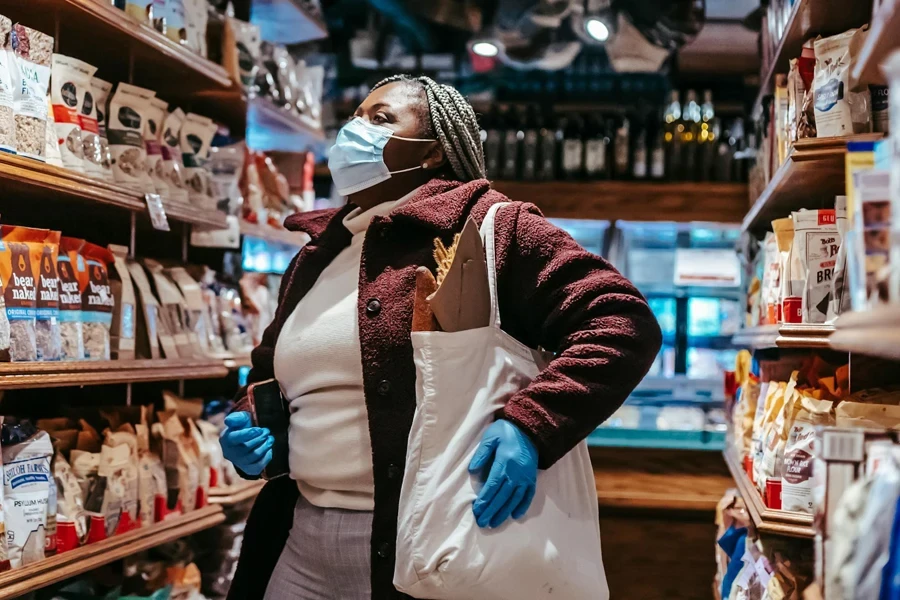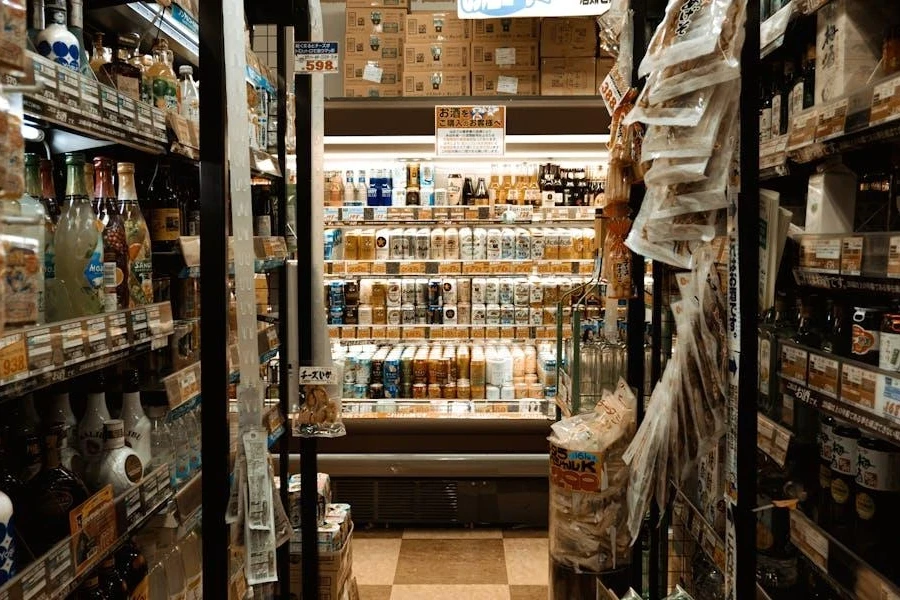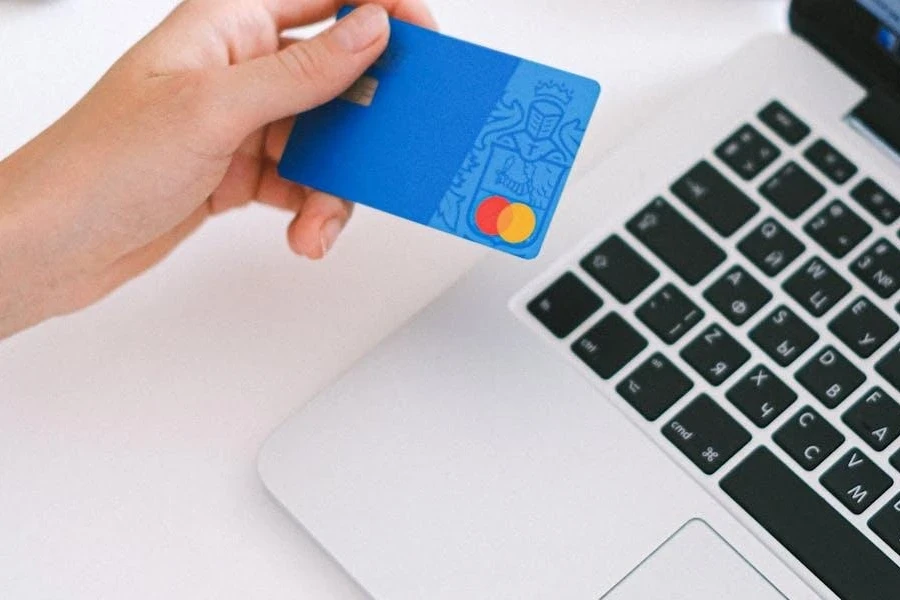The consumer packaged goods (CPG) market is highly competitive, as many companies fight for the average consumer’s attention. In recent years, many businesses in this industry have sought to secure a large portion of the CPG market.
This means that businesses hoping to become CPG brands must discover ways to differentiate themselves from others. Creating an effective CPG marketing strategy is an excellent place to start. This article offers five things to do when creating an effective strategy and two best practices to follow to boost your CPG success in 2025.
Table of Contents
What are CPGs, and how to tell them apart from other goods?
A look at the consumer packaged goods industry
5 trends shpaing the consumer packaged goods market
CPG marketing: 5 things to do for an effective strategy
2 best practices to help create an effective CPG marketing plan
Final words
What are CPGs, and how to tell them apart from other goods?

CPGs cover all products people use every day and need to buy frequently because they don’t last long. Examples include cosmetics, clothing, drinks, personal care items, food, medicine, and cleaning supplies. Usually, consumers get these products from online retailers, physical stores, and even social media platforms.
Consumer packaged goods fall under the “convenience item” category because of their wide availability and ease of use. Since these products require little thought before buying, retailers stock shelves fully. This makes it easy for consumers to find and purchase these items again as soon as they need to restock.
But there’s more. These everyday items are usually inexpensive for most people. Manufacturers also make and sell larger quantities to keep these goods widely available. All products that fit these descriptions are consumer packaged goods.
A look at the consumer packaged goods industry

The consumer packaged goods (CPG) industry is a key driver of the U.S. economy, significantly contributing to jobs and economic growth. Interestingly, it supports an impressive 20.4 million jobs across the country.
In addition to job creation, the CPG sector contributes a massive US$ 2 trillion to the country’s GDP. The industry’s influence is shown in its market size. In 2022, experts valued the global CGP market at US$ 2.132 trillion. They expect this figure to rise dramatically, reaching US$ 3.171 trillion by 2032 at a 4.1% compound annual growth rate (CAGR).
5 trends shaping the consumer packaged goods market

1. The increasing influence of online media on consumers’ buying decisions
With over 5.07 billion people on social media in 2024, its influence is already spreading towards consumers’ buying decisions. Consumers increasingly rely on social media sites, apps, influencers, and online stores to research and purchase essential products.
2. An uptick in online shopping due to convenience
Consumers increasingly choose seamless shopping experiences because they value making quick purchases and delivering items straight to their door. This convenience makes online shopping a highly appealing option for consumer packaged goods.
3. Increased interest in health-related products and brands that promote sustainability
Even as the effect of the lockdown era reduces, consumers still prioritize health-conscious decisions. At the same time, brands committed to sustainability have recorded increased sales, as research shows up to 44% of consumers are more likely to buy from eco-conscious businesses.
4. A noticeable shift towards private labels over popular brands
Many consumers discovered that store-branded labels offer better quality/performance or are on the same level as popular brands while being affordable. Hence, there’s a significant shift towards private labels, which extends to CPG products.
5. The rise of QR codes
QR codes are becoming increasingly popular in the CPG industry. This growth presents a great opportunity for CPG brands to create unique and engaging customer experiences with QR codes.
CPG marketing: 5 things to do for an effective strategy

Like in any other industry, the main goal of CPG marketing is to attract and keep customers, boost sales, and grow the business. Creating an effective strategy involves various activities that can happen offline or online.
Companies can use different channels to spread their marketing efforts, such as billboard ads, paid social media, content marketing, or organic marketing. Here are five things retailers must do for an effective CPG marketing strategy.
1. Understand the consumer

First, CPG brands must understand their target audience. They must research their age, gender, location, job, and income. This will help them hone in on what they care about, their interests, needs, desires, and challenges. CPG brands can gather these valuable insights through market research and consumer surveys.
2. Build a solid brand image
With today’s competitive CPG market, building a strong brand is the only way businesses can stand out. A well-established brand also helps build trust and loyalty with customers over time.
How can retailers create a strong brand image? Start by crafting a story highlighting the brand’s history, purpose, and mission. Next, create a consistent and attractive brand identity with a unique logo, color scheme, imagery, and typography.
Don’t forget to craft a voice that matches the brand identity and connects with the target audience. Once businesses have these elements, they must share them across all channels, including press releases and social media. They can also partner with influencers to increase their reach.
3. Differentiate the product

A unique brand identity is essential, but it only matters if the products catch the consumers’ eye. That’s where product differentiation comes in. Brands must consider what makes their products stand out and add it to their marketing message.
Do they have unique flavors or added benefits? Are they packaged sustainably or innovatively? Do the products have exceptional quality? These factors can help make a brand’s products more appealing and encourage consumers to choose them over the competition.
4. Distribute the product effectively
Effective product distribution is also key in CPG marketing. The goal is to ensure customers can easily purchase the brand’s products wherever they shop. Remember, relying on traditional stores (like supermarkets and convenience stores) isn’t enough anymore.
CPG brands must also tap into online marketplaces like Etsy and Amazon to boost online sales. Creating a direct sales channel, like setting up an online store on their websites to reach customers directly, is even more important.
5. Promote! Promote!! Promote!!!

Broadening product distribution and setting up direct sales channels are just part of the CPG marketing chain. Brands must also focus on solid promotional efforts. These include advertising, public relations, sales promotions, and direct marketing. These activities are also essential for highlighting a brand’s products’ benefits, boosting demand, and attracting new customers.
2 best practices to help create an effective CPG marketing plan
1. Always be ready to adapt
CPG brands must always stay flexible and ready to adjust their approach to stay caught up. Here’s everything that can help them stay ahead of the competition.
- Watch market trends: CPG brands must monitor trends. This helps them stay ahead and anticipate shifts in consumer preferences.
- Monitor your competitors: Companies must regularly check their competitors’ activities, such as new products, pricing, and marketing strategies. This is a great way to find market gaps, measure marketing performance, and stand out.
- Listen to customer feedback: Customer satisfaction is key. Hence, brands should always consider what customers say to improve their products and address their needs/concerns.
- Be ready to adapt: Whether changing product lines, tweaking marketing efforts, or exploring new sales channels, being adaptable helps CPG brands leverage opportunities and tackle challenges effectively.
2. Make data-driven decisions

A CPG marketing campaign can’t be successful without some data analytics. For instance, sales data can show businesses which products are doing well and which aren’t. Customer data can also help them understand demographics, browsing behavior, and purchase history, allowing brands to tailor their marketing messages and boost engagement.
Final words
With consumer demands evolving constantly, the CPG market remains a dynamic industry that requires a lot of adaptability. Businesses must continuously innovate to benefit from the market’s insane profitability and motivate consumers to choose them over others. Thankfully, the strategies discussed in this article can help CPG brands attract many eyes and stand out despite suffocating competition.





 Afrikaans
Afrikaans አማርኛ
አማርኛ العربية
العربية বাংলা
বাংলা Nederlands
Nederlands English
English Français
Français Deutsch
Deutsch हिन्दी
हिन्दी Bahasa Indonesia
Bahasa Indonesia Italiano
Italiano 日本語
日本語 한국어
한국어 Bahasa Melayu
Bahasa Melayu മലയാളം
മലയാളം پښتو
پښتو فارسی
فارسی Polski
Polski Português
Português Русский
Русский Español
Español Kiswahili
Kiswahili ไทย
ไทย Türkçe
Türkçe اردو
اردو Tiếng Việt
Tiếng Việt isiXhosa
isiXhosa Zulu
Zulu